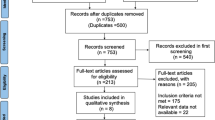Summary
In the management of acute major vessel occlusion, the use of fibrinolytic agents such as recombinant tissue plasminogen activator (rt-PA), urokinase or streptokinase is widely accepted. Today, the spectrum of indications for thrombolytic drugs comprises acute myocardial infarction, lung embolism, ischaemic stroke, deep vein thrombosis and acute arterial occlusions of the lower limbs. In view of the histopathological and clinical features of retinal vessel occlusion, fibrinolysis aimed at early restoration of blood flow appears to be a promising therapeutic approach. Basically, it is of some concern that the systemic administration of fibrinolytic agents is associated with a haemorrhagic risk. Since this includes cerebral haemorrhage or gastrointestinal bleeding, the choice of an appropriate intravenous thrombolytic therapy in a non-life threatening situation such as central retinal artery occlusion (CRAO) or central retinal vein occlusion (CRVO) should be based on minimising the risk of adverse events. Furthermore, the fibrinolytic treatment of choice should be able to produce rapid and complete restoration of retinal capillary and arterial or venous blood flow and maintain patency long enough for retinal salvage to take place. In this article, we review several studies of fibrinolytic therapy in patients with retinal vessel occlusion to determine whether this treatment is likely to improve major clinical outcomes. Moreover, we review the large scale trials of fibrinolysis in myocardial infarction and acute ischaemic stroke to evaluate safety and efficacy of various thrombolytic regimens. Furthermore, we report on our results of fibrinolytic therapy with low dose rt-PA in patients with retinal artery occlusion and ischaemic central retinal vein occlusion. In light of the fact that the occurrence of bleeding complications constitutes a dose dependent problem, we conclude that the use of low dose regimens should be the ideal approach to fibrinolysis in retinal vessel occlusion. Although the results of our pilot studies must be interpreted with caution, we believe that the administration of low-dose rt-PA (50 mg) in a frontloaded manner ( = simultaneous administration of rt-PA and intravenous heparin) constitutes a reasonable treatment option in patients with central retinal artery occlusion (CRAO) or ischaemic retinal vein occlusion (RVO), recent onset of symptoms (CRAO ≤ 12 h, RVO ≤ 11 d) and severe visual loss ( ≤ 20/50). Because of these limitations and the numerous contraindications of fibrinolytic therapy, only a limited number of patients will be suitable for this treatment. In view of the poor visual and ocular prognosis in severe retinal vessel occlusion, controlled clinical trials are needed to determine the benefit of thrombolysis in the management of this disease.
Zusammenfassung
Der Einsatz von fibrinolytisch wirksamen Substanzen wie Urokinase, Streptokinase oder rekombinantem Gewebsplasminogenaktivator (rt-PA) nimmt in der Akuttherapie thrombotischer Verschlüsse großer Gefäße einen festen Platz ein. Zu den wichtigsten Indikationsgebieten zählen der akute Myokardinfarkt, der hemisphärische Schlaganfall, die Lungenembolie sowie frische proximale Thromben oder akute arterielle Verschlüsse der unteren Extremitäten. Auch für die retinalen Gefäßverschlüsse erscheint in Anbetracht der histopathologischen und klinischen Merkmale die Anwendung der Fibrinolyse zur schnellen Wiederherstellung des Blutflusses als Therapieansatz grundsätzlich geeignet. Ein prinzipielles Problem ergibt sich hierbei jedoch aus dem mit der systemischen Gabe von Fibrinolytika verbundenen hämorrhagischen Risiko. In Anbetracht der Gefahr zerebraler oder gastrointestinaler Blutungen sollte daher die Wahl einer geeigneten thrombolytischen Therapie in einer nicht vital gefährdenden Situation wie dem Verschluß eines Netzhautgefäßes vor allem auf die Minimierung des Risikos schwerwiegender Komplikationen abzielen. Darüber hinaus sollte ein Fibrinolyseschema idealerweise auch in der Lage sein, eine schnelle und möglichst vollständige Wiederherstellung des kapillären und arteriell-venösen Blutflusses der Netzhaut zu erreichen. In dem vorliegenden Artikel werden die Ergebnisse verschiedener Studien zur fibrinolytischen Therapie bei retinalen Gefäßverschlüssen zusammengefaßt und im Hinblick auf eine potentielle klinische Wirksamkeit dieser Behandlungsform überprüft. Anhand einer Übersicht der wichtigsten großangelegten Studien zur Fibrinolyse bei Myokardinfarkt und akutem ischämischem Schlaganfall werden Sicherheit und Wirksamkeit der verschiedenen thrombolytischen Therapieregimes analysiert. Da das Auftreten von Blutungskomplikationen u. a. ein dosisabhängiges Problem darstellt, wird in der vorliegenden Arbeit auch über unsere Erfahrungen zur fibrinolytischen Behandlung mit niedrigdosiertem rt-PA bei arteriellen und ischämischen venösen retinalen Gefäßverschlüssen berichtet. Nach vorsichtiger Interpretation der Ergebnisse unserer Pilotstudien stellt die Gabe von niedrigdosiertem rt-PA (50 mg) in einem „frontloading“ Lyseschema ( = gleichzeitige Gabe von rt-PA und i. v. Heparin) bei Patienten mit Zentralarterienverschluß (ZAV) oder ischämischem Venenast- oder Zentralvenenverschluß (VAV/ZVV), akuter Symptomatik (ZAV ≤ 12 h, VAV/ZVV ≤ 11 Tage) und deutlichem Visusverlust ( ≤ 0,4) ein sinnvolles Therapiekonzept dar. Bedingt durch die erforderlichen strengen Indikationskriterien und häufig vorliegende Kontraindikationen zur Lysetherapie wird auch weiterhin nur ein kleinerer Teil der Patienten mit retinalem Gefäßverschluß einer solchen Behandlung zugänglich sein. In Anbetracht der äußerst ungünstigen Prognose bei ischämischem retinalem Gefäßverschluß erscheint jedoch die Durchführung kontrollierter randomisierter Studien unbedingt erforderlich, um die Wirksamkeit der Thrombolyse eindeutig beurteilen zu können.
Similar content being viewed by others
Author information
Authors and Affiliations
Rights and permissions
About this article
Cite this article
Hattenbach, LO. Fibrinolytic therapy in retinal vessel occlusion. Ophthalmologe 95, 568–575 (1998). https://doi.org/10.1007/s003470050318
Published:
Issue Date:
DOI: https://doi.org/10.1007/s003470050318




